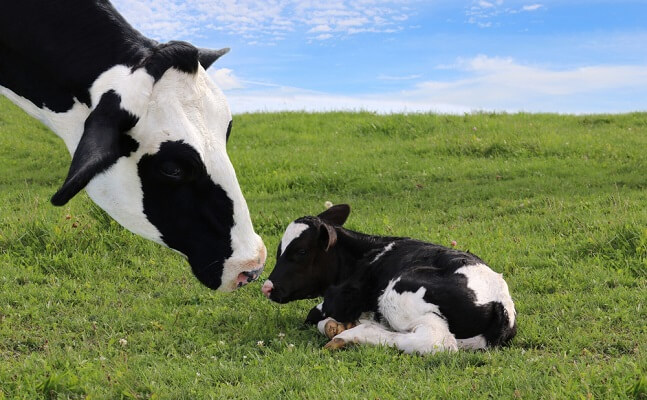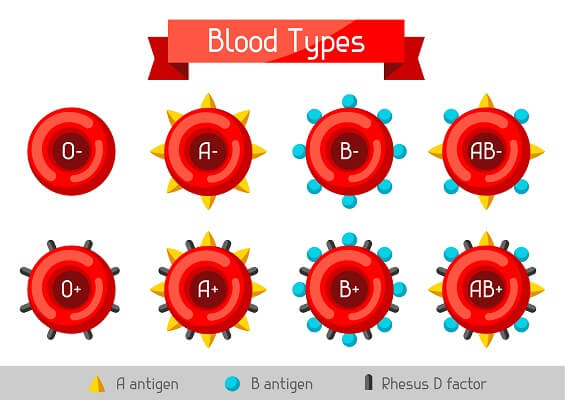Definition
Codominance occurs when two different versions – a.k.a. “alleles” – of the same gene are present in a living thing, and both alleles are expressed separately in different parts of an organism. Instead of one trait being dominant over the other, both traits appear.
Overview
Codominance is easy to spot in plants and animals that have more than one pigment color. Spotted cows and flowers with petals of two different colors are examples of codominance, for example. Codominance also occurs in some less visible traits, such as blood type. The A and B alleles for blood type can both be expressed at the same time, resulting in type AB blood.
In genetics, “dominant” genes are those that are always expressed if they are found in an organism. Dominant genes may be expressed as co-dominant – where two different traits are both expressed alongside each other – or as dominant/recessive, where the presence of a dominant gene completely masks the presence of a recessive gene.
Codominance versus Incomplete Dominance
Codominance is often confused with Incomplete Dominance. The difference between codominance and incomplete dominance is subtle. While codominance and incomplete dominance both result in a different phenotype than complete dominance would produce, they are not the same.
Codominance results in two phenotypes being expressed in different parts of an animal. For example, a Holstein cow has black and white spots. This results from a “white” allele and a “black” allele that are each fully expressed in different parts of the organism.

By contrast, incomplete dominance is seen when the two alleles mix together to create an entirely different phenotype. The flowers below are an example of incomplete dominance because the “red” and “white” alleles mix together in certain individuals to create a pink phenotype. The pink phenotype is a mixture of both alleles being expressed at the same time in every cell. If a Holstein cow expressed incomplete dominance, the entire cow would be grey instead of having distinct spots.

Examples of Codominance
Livestock
When a chicken with white feathers breeds with a chicken with black feathers, the result is an offspring chicken that grows up to have both black and white feathers. Likewise, when a red cow breeds with a red cow, the resulting offspring may show both red and white hairs, resulting in a mixed coat pattern called “roan.”
At first look, a “roan” coat may look like incomplete dominance because it looks like a full mix of red and white to produce a much lighter red coat color. However, if you look at individual hairs they are either entirely red or entirely white. Incomplete dominance would produce a coat of a solid color, just much lighter than a full red cow. Each hair would be the same, lighter color.
Rhododendron
Rhododendrons and other flowers may also exhibit codominance. In the case of rhododendrons, the crossing of a red and white flower may yield a flower that has both red and white patches. Many flowers show similar patterns of codominance, where both of the parental flower colors show up in different parts of the plant.
Blood Type
An example of codominance that occurs in humans is that of blood type.
There are three different versions of the gene for proteins that appear on the outside of our blood cells and help our body to identify the cells as their own. These alleles are A, B, and O. The “O” allele actually does not code for any protein at all, so people with the “O” trait lack both A and B proteins. The A and B alleles, on the other hand, code for two different proteins. These proteins, like different colors in a flower, can appear together.
Someone who inherits an A allele from one parent and a B allele from the other will express both proteins in a codominant fashion, resulting in an AB blood type. The “O” trait, on the other hand, is a good example of a dominant/recessive relationship: if either A or B is expressed, the “O” trait is not expressed.
This chart below illustrates how codominance can occur between A and B traits, while a dominant/recessive relationship exists between those traits and the O trait:

Quiz
1. Which of the following is NOT an example of codominance?
A. A child of parents with blood types A and B, who has AB blood type.
B. A calf of a red cow and a white cow, who has a roan coat consisting of red and white hairs.
C. A child of a parent with blue eyes and a parent with brown eyes, who has brown eyes.
D. A flower offspring of red and white flowers, which has both red and white petals.
2. Which of the following is NOT true of dominant genes?
A. Dominant genes are always expressed wherever they are present.
B. A dominant gene will overpower all other genes to be the only one expressed.
C. Two dominant genes can be expressed together in a situation of co-dominance.
D. None of the above.
3. Which of the following blood types is NOT a dominant trait?
A. A blood type
B. B blood type
C. O blood type
D. A and B
